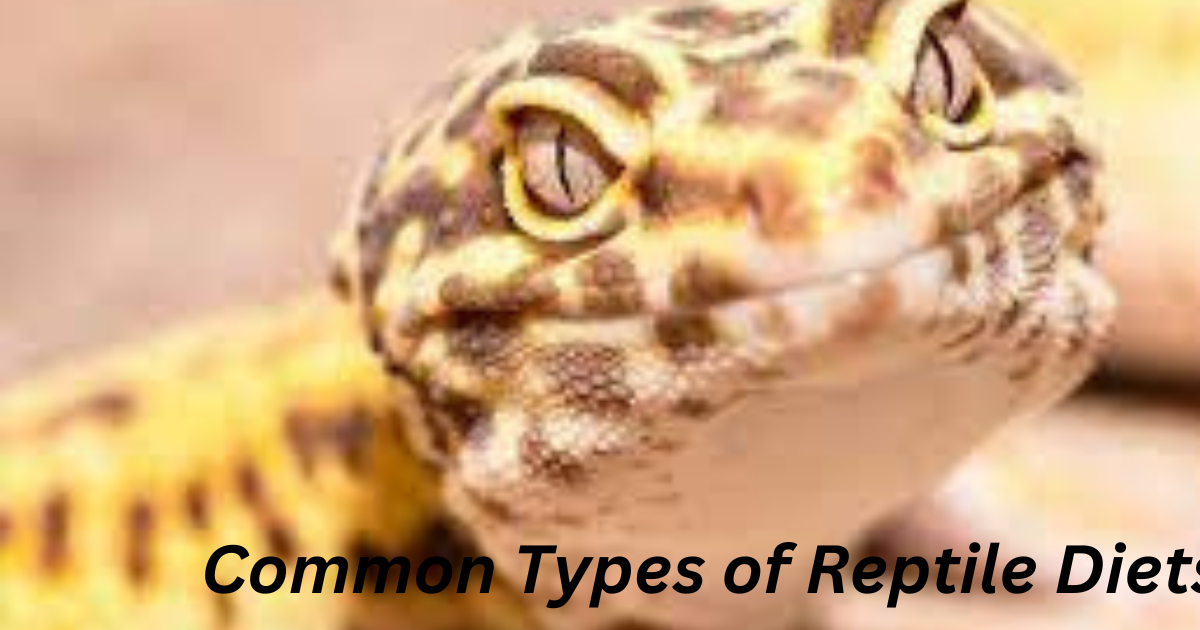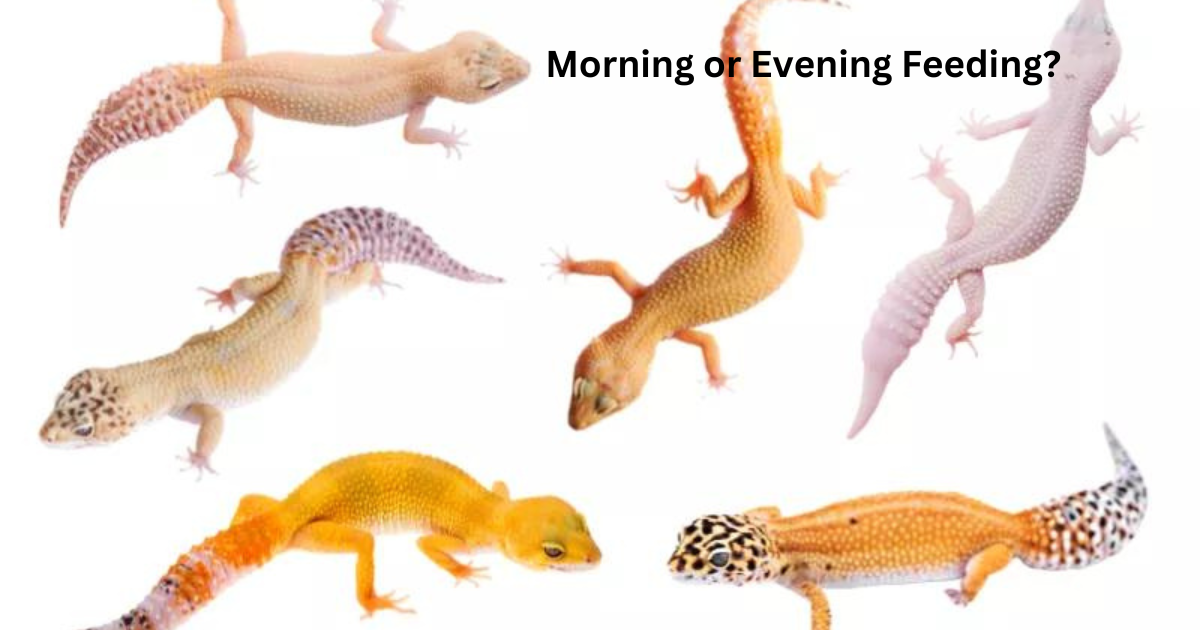Welcoming a reptile into your home is an exciting journey. Pet reptiles make fascinating companions, bringing a touch of the wild into our homes. Just like any other pets, reptiles require a balanced and appropriate diet to thrive. In this beginner’s guide, we’ll delve into the intricacies of creating a suitable feeding schedule for your scaly friends. From understanding nutritional needs to tailoring schedules for different species, let’s explore the key aspects of feeding pet reptiles.
Alongside providing an appropriate enclosure and habitat, a well-structured feeding schedule is paramount for their health and happiness. Let’s embark on this guide to ensure your pet reptile receives the right nutrition at the right time.

Understanding Nutritional Needs
Different reptile species have varied nutritional requirements. Understanding their natural diet in the wild will guide you in providing a balanced diet in captivity. Researching your pet’s specific needs ensures you’re offering the right nutrients.

General Feeding Guidelines
Reptiles require a combination of proteins, vitamins, minerals, and fibers. While specific dietary needs vary, a common guideline is to offer a diet that mirrors what they would consume in the wild. This typically includes a mix of live insects, vegetables, and occasionally fruits.
Establishing comprehensive feeding guidelines for my pet reptile entails a proactive and informed approach. By transitioning from conventional feeding methods to a tailored regimen, I prioritize their nutritional needs. Consistently considering factors such as species, age, and size, I curate meals that encompass a spectrum of vitamins and minerals.

This approach ensures their vitality and guards against potential health issues. Regular consultations with veterinarians and reptile experts further refine my strategy.
Through these meticulous efforts, I maintain a responsible and attentive reptile care routine that serves as a testament to exceptional pet ownership practices.
Common Types of Reptile Diets
Reptiles have diverse diets based on their species. Herbivores primarily eat plants, omnivores consume both plant matter and insects, while carnivores thrive on a diet of live prey. Knowing your reptile’s dietary category is crucial for creating an appropriate feeding plan.

Creating a Feeding Schedule
Establishing a consistent feeding routine helps reptiles adapt and anticipate meal times. Typically, young reptiles may need daily feedings, while adults may require less frequent meals. Regularity is key to avoiding stress and maintaining overall well.

Understanding Your Reptile’s Dietary Needs
Before creating a feeding schedule, it’s crucial to understand the dietary preferences and requirements of your specific reptile species. Some reptiles are carnivores, while others are herbivores or omnivores. Research your pet’s natural diet to make informed choices.

Frequency of Feeding
Different reptile species have varying feeding frequencies. Generally, young reptiles require more frequent meals, while adults may eat less often. Consult reputable sources or a veterinarian to determine the appropriate feeding frequency for your pet.

Morning or Evening Feeding
Consider your reptile’s natural behavior when deciding on a feeding time. Many reptiles are more active and alert during certain times of the day. Mimicking their natural feeding patterns can promote better digestion and overall health.

Portion Control
Overfeeding can lead to obesity and health issues in reptiles. Offer appropriately sized portions that can be consumed within a reasonable timeframe. Remove any uneaten food to maintain a clean terrarium.
Practicing effective portion control with my pet reptile remains a cornerstone of their well-being. Through a seamless transition to a balanced diet, I actively regulate their food intake for optimal health.

Mindfully considering their species, size, and nutritional needs, I tailor each meal to prevent overfeeding and maintain an ideal body condition. This approach not only prevents potential health issues but also mirrors their natural feeding patterns.
By prioritizing portion control, I cultivate a responsible reptile care routine that promotes their vitality and longevity, setting a standard for exceptional pet ownership practices.
Choosing Nutrient-Rich Foods
Opt for high-quality, nutrient-rich foods that cater to your reptile’s dietary preferences. This might include live insects, vegetables, fruits, or commercial reptile diets. Varying their diet can prevent nutritional deficiencies.
 I actively prioritize nutrient-rich options when selecting nourishing meals for my pet reptile. Transitioning from common choices to more beneficial ones, I’ve learned to introduce variety while ensuring optimal health. Incorporating a spectrum of vitamins and minerals, I emphasize fresh vegetables and lean protein sources.
I actively prioritize nutrient-rich options when selecting nourishing meals for my pet reptile. Transitioning from common choices to more beneficial ones, I’ve learned to introduce variety while ensuring optimal health. Incorporating a spectrum of vitamins and minerals, I emphasize fresh vegetables and lean protein sources.
By making these mindful choices, I ensure that my reptile companion thrives and maintains vitality. In the realm of pet reptile care, my approach not only fosters their well-being but also sets a benchmark for responsible ownership.
Supplements and Vitamins
Some reptiles require additional supplements to ensure they receive all necessary nutrients. Calcium and vitamin D3 supplements are often necessary, especially for those who don’t receive sufficient sunlight exposure.
Incorporating essential supplements and vitamins into my pet reptile’s diet remains a proactive aspect of their care. I ensure their well-being is prioritized by seamlessly integrating these crucial elements and making informed transitions.

Regularly assessing dietary requirements and consulting with reptile experts allows me to tailor a regimen that guarantees vitality and longevity.
From calcium to vitamin D, each component is thoughtfully selected to mirror its natural habitat. This commitment not only underscores responsible pet ownership but also positions their health at the forefront.
Water Requirements
Don’t forget about hydration! Provide a shallow dish of clean, chlorine-free water in your reptile’s enclosure.

Slug: feeding-schedule-for-pet-reptiles-guide
Meta Description: Discover the essential feeding schedule for your pet reptiles. Learn about proper nutrition, feeding frequency, and species-specific requirements in this comprehensive beginner’s guide.
Need more of your pet reptiles
1.Handling and Taming Pet Reptiles
2. Reptile Terrarium Setup Guide
4. Tortoises
FAQ
- How often should I feed my specific reptile species and what should their diet consist of?
Establishing the appropriate feeding frequency and diet for your specific reptile species is crucial. Research their natural habits and dietary preferences. Generally, young reptiles require more frequent meals, while adults might eat less often.
Choose nutrient-rich foods that align with their natural diet – whether insects, vegetables, fruits, or commercial reptile diets – to ensure their health and vitality.
2. Is it better to feed my pet reptile in the morning or evening for optimal digestion?
Determining the ideal feeding time for your pet reptile depends on its natural behavior. Many reptiles are more active during certain times of the day.
Whether morning or evening, feeding during these periods can enhance digestion and nutrient absorption, closely replicating their natural feeding patterns for optimal well-being.
3. What are the signs that I’m overfeeding or underfeeding my pet reptile?
Recognizing signs of overfeeding or underfeeding in your pet reptile is crucial. Overfeeding might lead to obesity, lethargy, or digestive issues. Conversely, underfeeding can result in weight loss, reduced activity, and diminished overall health.
Regularly monitor your reptile’s weight, behavior, and appetite to strike the right balance and provide them with the nutrition they need.
4. Are there any recommended supplements or vitamins I should include in my reptile’s diet?
Incorporating essential supplements and vitamins into your reptile’s diet is crucial. Calcium and vitamin D3 supplements are often necessary, especially for reptiles with limited sunlight exposure.
Consult a veterinarian to determine the specific needs of your pet species and ensure they receive the right balance of nutrients for optimal health.
5. How can I create a feeding routine that mimics my reptile’s natural behavior and habitat?
Crafting a feeding routine that mirrors your reptile’s natural behavior and habitat involves understanding their native environment. Research their feeding patterns and preferences.
Tailor feeding times, locations, and food types accordingly. By replicating their natural conditions, you enhance their overall well-being and encourage healthy eating habits.

